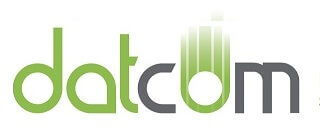Many businesses use older applications to perform critical business functions. New software can be very tantalizing, every benefit looking like a dream come true. However, migrating over might cause businesses to run into compatibility issues. Thus, businesses refer to their irreplaceable applications as “legacy software.”
Often, businesses continue to use legacy software because it contains key business data. With time, such systems are challenging to maintain due to unsupported components and difficulty in enhancing and adding features. Therefore, they eventually become low-performing in meeting employees’ and customers’ needs.
That’s where Data Processing Automation (DPA) comes in. Businesses looking to squeeze more life out of critical applications should consider DPA as a powerful alternative to upgrading. DPA makes the obsolete elite.
For example, DPA allows older billing systems and newer applications to talk to one another automatically. Normally, companies use manual labor to migrate data using file formats such as CSV. Or, they have someone typing in every address and account number.
DPA eliminates the need for this manual labor. Once you bring the data into one system, it appears like magic in all your other applications, bypassing your workers and eliminating any chance for data entry errors.
How it Works
- Executes automations across common legacy environments (email system, CRM, finance system)
- Transfers data from legacy systems to external and local sources (spreadsheets, cloud, or other systems)
- Imports data from external sources into legacy systems
- Updates data stored in legacy systems Logs into legacy systems using user credentials
- Creates reports based on tasks completed in legacy systems
- Sends alerts on predefined activities executed in legacy systems
Before you know it, your back-office processes will be faster and more accurate than you ever dreamed. Meeting targets for compliance and customer satisfaction will be a breeze. And you’ll have up-to-the-minute analytics for purposes of reporting and making better business decisions. You’ll have greater visibility of your entire business process, uncovering those shadow processes that are causing you to leave money on the table.
Next, you’ll be deciding what to do with all the time saved and profits generated. With a 27% increase in administrative efficiency and a 30% reduction in the cost of that labor, you’ll have more to do more.
You can run with a smaller team, or you can train your staff in higher-value work. These statistics come from the technology firms we trust to help us make informed, data-driven decisions. Dozens of case studies show that DPA is helping businesses pull ahead of their competitors.
Leave a comment to learn more about enhancing legacy software with DPA.


